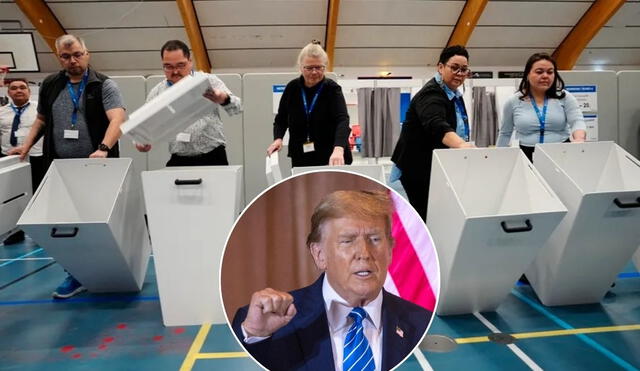Trump’s island interest and independence debate shape Greenland elections
The President of the United States, determined to take over the immense Arctic island “one way or another,” tried until the last minute to influence the election, provoking astonishment, rejection and, to a small extent, enthusiasm among Greenlanders.

The population of the largest island in the world, Greenland, went to the polls this Tuesday, March 11. At least 40,500 Greenlanders were called to the polls to elect their next Parliament, one that will have to confront the expansionist interests of U.S. President Donald Trump. The results are expected to be known tomorrow due to the conditions of the territory, almost entirely covered by ice.
The polling stations opened this Tuesday in Greenland at 9:00 local time (11:00 GMT) to celebrate elections marked by the repeated desire of Trump to take over this autonomous Danish territory, which aspires to become independent in the future. Since few opinion polls take place on the North Atlantic island, it is less clear than in other European elections as to what the outcome might be.
Trump's interest in Greenland shapes elections
Trump’s aggressive stance has, ironically, boosted Greenland’s leverage in negotiations with Denmark. The ruling Inuit Ataqatigiit party views independence as a long-term project requiring careful economic planning. However, the Naleraq party pushes for a faster break from Denmark, advocating for direct U.S. security agreements.
Meanwhile, Danish intelligence has flagged potential election interference from Russia, China, and the U.S., prompting Greenland’s parliament to ban foreign political donations. As Greenlanders head to the polls, the outcome remains uncertain. What’s clear, however, is that Trump’s renewed push for control has accelerated the island’s path toward self-determination. The world will be watching as the results unfold.
Will Greenland achieve its independency?
While the push for Greenlandic sovereignty has been a longstanding political goal, the challenge lies in balancing autonomy with economic stability. Currently, Denmark provides Greenland with an annual block grant of over $500 million—about 20% of its GDP.
Key economic considerations in the election include:
- Resource development: Greenland is rich in oil, gas, and rare earth metals, crucial for electric vehicles and military technology. While the U.S. eyes these assets, local leaders insist any mining deals must benefit Greenlanders.
- Foreign influence and security: With Russia and China expanding their Arctic interests, concerns grow over external interference. Denmark still controls Greenland’s security, but some politicians advocate for an independent defense treaty with Denmark, Canada, or the U.S.
- Social services and infrastructure: Breaking from Denmark would mean losing access to Danish-funded healthcare, education, and welfare systems, raising questions about Greenland’s readiness for full independence.
Why Greenland’s elections matter?
The island's vast reserves of rare earth minerals, vital for green energy and defense industries, make it a strategic hotspot. As the world shifts away from reliance on China’s mineral supply, Greenland's role in global trade is expanding.
Furthermore, its location between North America and Europe makes it a key player in Arctic security. The U.S. already maintains a military base in Greenland, and with Russia expanding its Arctic presence and China seeking influence in the region, the island’s future is a matter of international security.












